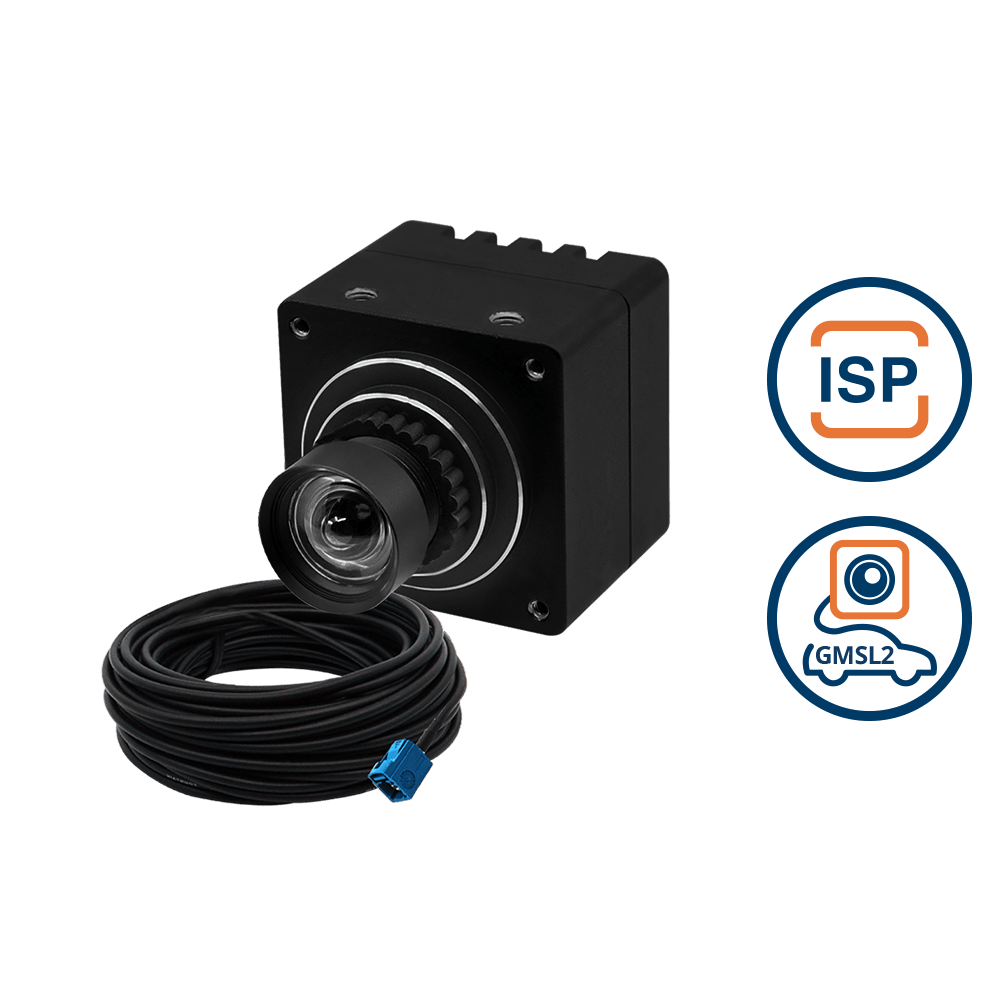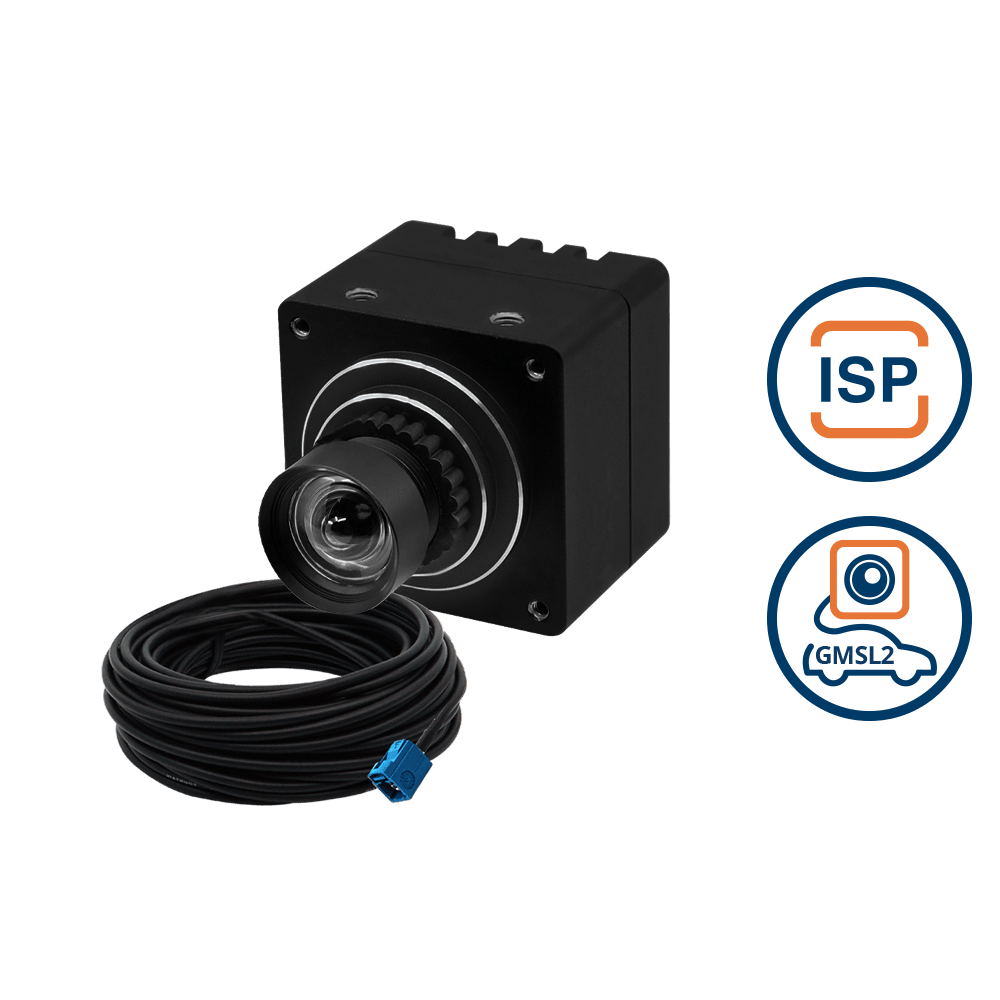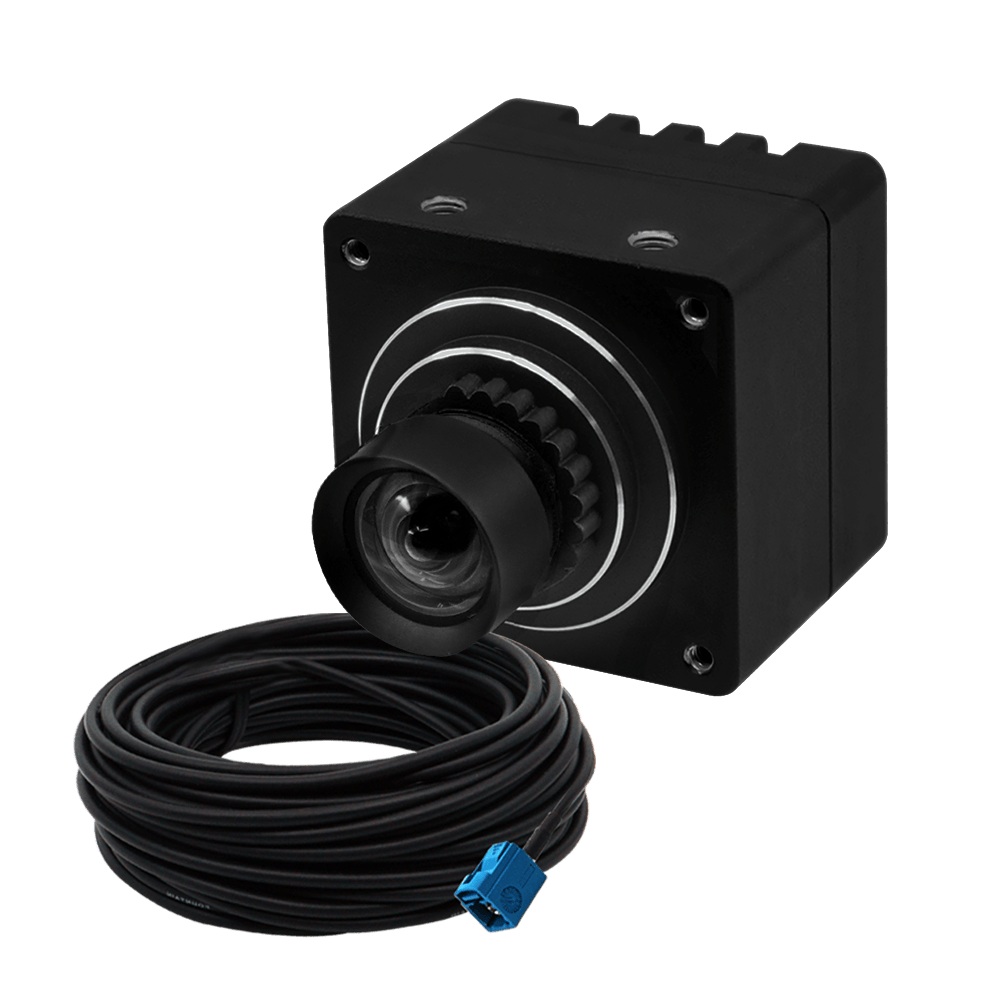GMSL2 technology has redefined high-speed data transmission, enabling cameras to deliver exceptional performance in demanding environments. From seamless video streaming to real-time control data, GMSL2 has become a cornerstone for advanced imaging systems across industries.
However, the true impact of GMSL2 cameras lies not only in their inherent capabilities but also in how they integrate with emerging technologies. These complementary advancements enhance the functionality of GMSL2 cameras, enabling applications that demand greater precision, speed, and efficiency.
This article explores the role of emerging technologies like image sensors, artificial intelligence (AI), and more in amplifying the performance of GMSL2 cameras.
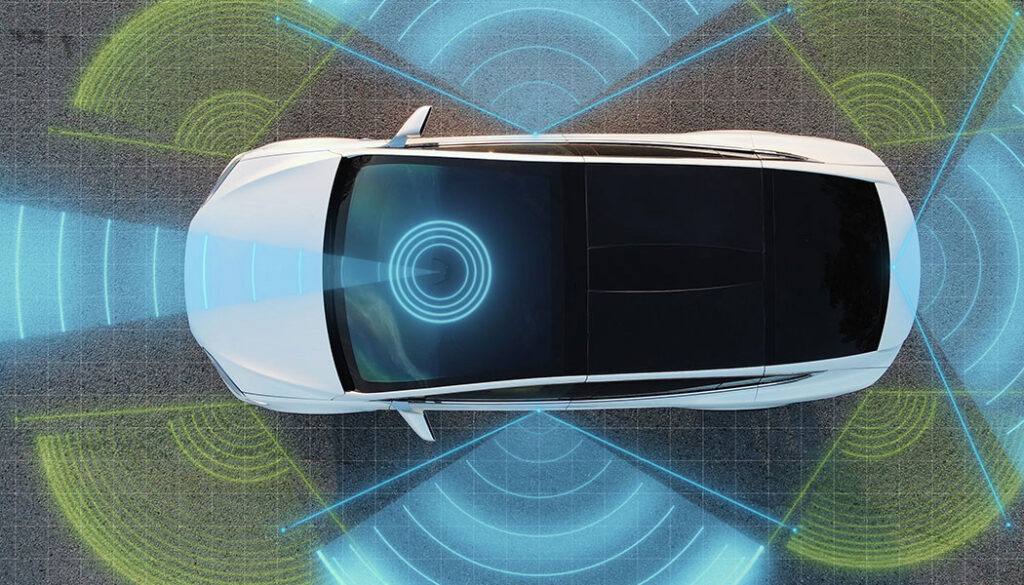
Overview of GMSL2 Cameras
GMSL2 cameras are advanced imaging systems that leverage Gigabit Multimedia Serial Link 2 (GMSL2) technology to enable high-speed, reliable data transmission. These cameras are engineered for applications that demand exceptional performance in real-time environments. This makes them a go-to solution in industries such as automotive, industrial automation, and surveillance.
Core Features and Capabilities
- High-Speed Data Transfer: GMSL2 cameras support data rates of up to 6 Gbps, ensuring seamless transmission of high-resolution video feeds.
- Long-Distance Transmission: With support for cable lengths of up to 15 meters, these cameras allow for flexible placement without compromising signal integrity.
- Power Over Coax (PoC): Simplified cabling eliminates the need for separate power lines, reducing system complexity and installation costs.
- Low Latency: Near-instantaneous data transmission ensures timely processing, which is critical for applications like autonomous vehicles and robotics.
- Robust EMI Resistance: Designed to operate reliably in harsh environments, GMSL2 cameras maintain signal integrity even in areas with high electromagnetic interference.
Common Use Cases
- Automotive: GMSL2 cameras are integral to advanced driver-assistance systems (ADAS) and autonomous vehicles, enabling object detection, lane tracking, and obstacle avoidance.
- Industrial Automation: These cameras support high-precision tasks like robotic assembly, quality control, and process monitoring.
- Surveillance: In security systems, GMSL2 cameras offer high-resolution imaging for real-time monitoring and enhanced situational awareness.
Emerging Technologies That Complement GMSL2 Cameras
The true potential of GMSL2 cameras is unlocked when combined with emerging technologies that enhance their functionality. These include:
Advanced Image Sensors
Advanced image sensors provide the foundation for high-performance cameras, enabling GMSL2 systems to deliver unparalleled clarity and precision. Modern sensors feature higher resolutions, improved dynamic range, and enhanced low-light sensitivity, ensuring superior image quality in challenging environments.
Technologies like HDR (High Dynamic Range) allow GMSL2 cameras to capture vivid details in high-contrast scenes. Similarly, global shutter sensors eliminate shutter artifacts, making them ideal for high-speed applications such as autonomous vehicles or industrial robotics. These sensors also incorporate innovative pixel designs that enhance color accuracy and reduce noise, even in low-light conditions.
By integrating with GMSL2 technology, advanced image sensors ensure high-speed, long-distance transmission without compromising image integrity. This makes them indispensable for applications that demand real-time precision and reliability.
Artificial Intelligence (AI) and Machine Learning (ML)
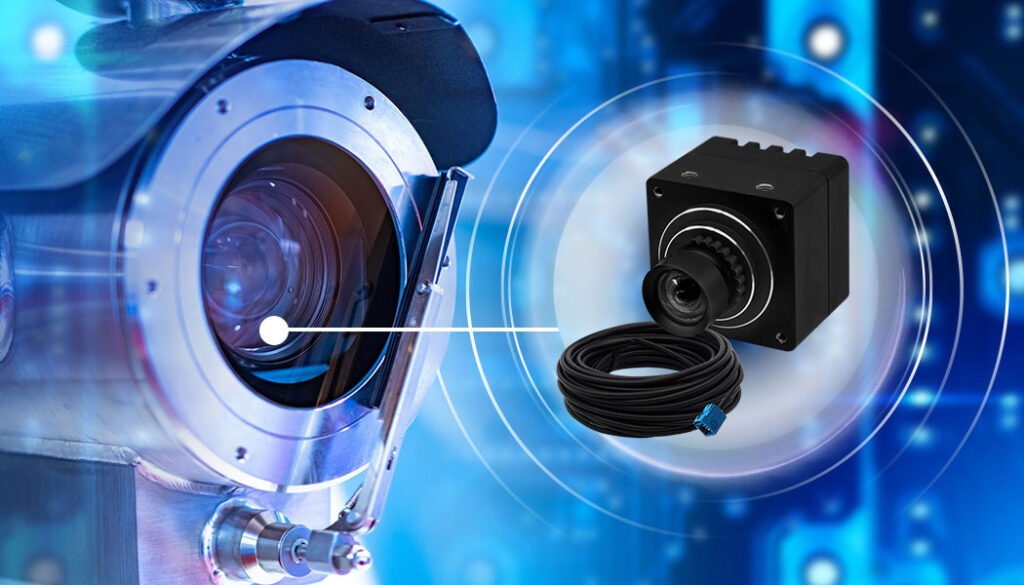
AI and ML are revolutionizing how GMSL2 cameras process and analyze data. These technologies enable advanced capabilities such as object detection, tracking, classification, and anomaly detection, which are vital for applications like autonomous driving, intelligent surveillance, and industrial automation.
AI-powered algorithms enhance the decision-making process by identifying patterns and responding to dynamic environments with remarkable accuracy. For instance, in autonomous vehicles, AI can help GMSL2 cameras identify pedestrians, road signs, and potential hazards, ensuring a safer driving experience.
Machine learning further streamlines these processes by training systems to improve over time, reducing false positives and enhancing automation. The integration of AI and ML with GMSL2 cameras not only boosts performance but also optimizes efficiency and reliability.
Edge Computing
Edge computing is transforming the way GMSL2 cameras handle data by enabling localized processing directly at the source. Instead of relying on cloud-based systems, edge computing devices like the NVIDIA Jetson series process data on-site, reducing latency and bandwidth usage.
This approach is particularly critical in time-sensitive applications, such as autonomous vehicles, where real-time decision-making can mean the difference between success and failure. By combining edge computing with GMSL2 cameras, systems can perform tasks such as image recognition, object detection, and environmental analysis with minimal delay.
Moreover, edge computing enhances data security by limiting the need for external transmission, a crucial factor in industries like healthcare and defense. The combination of edge computing and GMSL2 technology results in faster, more reliable imaging systems capable of meeting the demands of modern applications.
5G Connectivity
The advent of 5G connectivity has unlocked new possibilities for GMSL2 cameras, enabling ultra-fast data transmission with minimal latency. With 5G’s high bandwidth, GMSL2 cameras can seamlessly transmit high-resolution video feeds and sensor data, making them ideal for applications like autonomous vehicles and smart cities.
For instance, in autonomous driving, 5G allows real-time communication between cameras, sensors, and control units, enhancing navigation, obstacle detection, and situational awareness. Similarly, in urban surveillance, 5G-powered GMSL2 cameras can deliver live feeds with unparalleled clarity, aiding in public safety efforts.
The low latency of 5G ensures that data is processed almost instantly, enabling faster decision-making and improved operational efficiency. As 5G infrastructure continues to expand, its integration with GMSL2 cameras will further drive innovation across industries.
Sensor Fusion Technologies
Sensor fusion combines data from multiple sources such as LiDAR, RADAR, IMU, GPS, and ultrasonic sensors to create a comprehensive understanding of the environment. When paired with GMSL2 cameras, these technologies enable systems to process and interpret complex datasets, resulting in enhanced situational awareness and precise 3D mapping.
For example, in autonomous vehicles, sensor fusion allows GMSL2 cameras to work alongside LiDAR and RADAR to identify obstacles, track objects, and navigate dynamic environments with pinpoint accuracy. The integration of these sensors provides redundancy, ensuring reliable performance even if one sensor fails.
In industrial automation, sensor fusion improves precision in robotics and assembly lines, enabling smarter, safer operations. The combination of GMSL2 cameras and sensor fusion technologies empowers systems to tackle challenges in real-world scenarios with unmatched efficiency and reliability.
Time-of-Flight (ToF) Sensors
Time-of-Flight (ToF) sensors, when integrated with GMSL2 cameras, add a new dimension to imaging systems by providing accurate depth perception and spatial analysis. ToF sensors measure the time it takes for light to travel to an object and back, enabling precise distance measurements.
This capability is invaluable in applications like robotics, where accurate depth data is essential for obstacle avoidance and manipulation tasks. In surveillance, the combination of ToF and GMSL2 cameras enhances the ability to detect objects in 3D space, improving security and monitoring systems.
Furthermore, ToF sensors enhance imaging in low-light conditions, making them suitable for diverse environments. The synergy between ToF technology and GMSL2 cameras creates robust systems capable of delivering detailed, high-quality imagery with added spatial context, revolutionizing applications across industries.
Middleware and Software Tools
Middleware and software tools play a crucial role in integrating GMSL2 cameras with other technologies, ensuring seamless operation and optimization. Advanced software frameworks enable efficient data processing, visualization, and synchronization, making it easier to deploy complex imaging systems.
Middleware simplifies communication between hardware components, streamlining tasks such as calibration, diagnostics, and real-time adjustments. For instance, tools designed for autonomous vehicles can integrate data from GMSL2 cameras, sensors, and control units, ensuring cohesive performance.
Innovations in software tools also improve system scalability, allowing GMSL2 cameras to adapt to evolving requirements. By bridging the gap between hardware and software, these tools enhance the overall functionality of imaging systems, maximizing the potential of GMSL2 technology.
Applications of GMSL2 Cameras with Emerging Technologies
GMSL2 cameras, when paired with emerging technologies, are enabling more precise, responsive, and efficient systems. Below are some key applications:
Autonomous Vehicles
In autonomous vehicles (AVs), GMSL2 cameras play a critical role in enabling multi-sensor fusion, where they work alongside LiDAR, radar, and ultrasonic sensors to provide comprehensive situational awareness.
This integration allows for enhanced navigation, accurate obstacle detection, and improved safety. GMSL2’s high-speed data transfer ensures that the cameras can deliver high-resolution, real-time imagery, crucial for safe autonomous driving in complex environments.
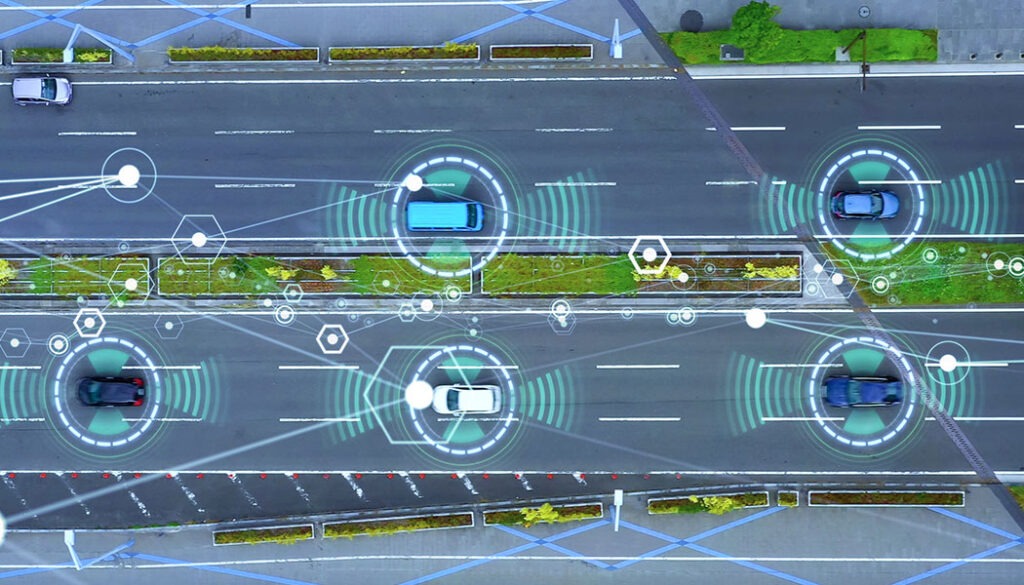
Industrial Automation
In industrial automation, GMSL2 cameras are indispensable for precision and quality control in robotics and manufacturing processes. The ability to transmit high-quality video and sensor data over long distances allows for the seamless integration of cameras with robotic arms, conveyor belts, and other automated systems. This combination helps improve productivity by ensuring accurate measurements, detecting defects, and optimizing assembly lines for faster, more reliable output.
Healthcare and Security
In healthcare, GMSL2 cameras enable advanced imaging for diagnostics, such as high-resolution medical imaging systems that assist in detecting abnormalities in X-rays, MRIs, and other scans.
The technology also plays a significant role in AI-powered surveillance systems, offering real-time monitoring for public safety and security. The integration of machine learning allows these systems to detect unusual behaviors or potential threats with a high degree of accuracy, contributing to faster response times and more effective security solutions.
Also read: GMSL2 Cameras: Definition, Architecture, and Features
Challenges and Future Prospects
As we look to the future, it’s important to consider both the challenges that need to be addressed and the exciting prospects for GMSL2 cameras.
Challenges
While GMSL2 cameras and their complementary technologies offer immense potential, certain challenges remain. Integration issues are a primary concern, as ensuring compatibility between GMSL2 systems and emerging technologies can be complex and resource-intensive. This is particularly true in multi-sensor setups, where synchronization and data fusion require precise calibration.
Additionally, the cost of implementing these advanced systems, including high-performance components like edge processors and AI modules, can be prohibitive for some industries. Another significant hurdle is the lack of standardization in certain sectors, which complicates the adoption of GMSL2-based solutions and limits interoperability between devices.
Future Prospects
Despite these challenges, the future of GMSL technology looks promising. Advancements in next-generation GMSL systems are expected to offer even higher bandwidth, better reliability, and enhanced support for emerging technologies.
As industries like automotive, healthcare, and smart cities continue to grow, the adoption of complementary technologies such as AI, edge computing, and sensor fusion is likely to accelerate. These innovations will further unlock the potential of GMSL2 cameras, enabling them to address increasingly complex challenges and drive transformative change across industries.
Wrapping Up
Emerging technologies such as advanced image sensors, AI, edge computing, and 5G are significantly enhancing the capabilities of GMSL2 cameras, pushing the boundaries of automation, safety, and efficiency across industries like automotive, healthcare, and industrial automation.
These advancements are transforming the landscape, enabling smarter, more responsive systems. To stay competitive in this fast-evolving space, stakeholders must embrace these innovations.
At TechNexion, we are at the forefront of providing cutting-edge GMSL2 camera solutions that integrate seamlessly with these emerging technologies, empowering businesses to drive the future of automation. To know more, visit our product page or get in touch with our experts here.
Related Products
- Overview of GMSL2 Cameras
- Emerging Technologies That Complement GMSL2 Cameras
- Artificial Intelligence (AI) and Machine Learning (ML)
- Edge Computing
- 5G Connectivity
- Sensor Fusion Technologies
- Time-of-Flight (ToF) Sensors
- Middleware and Software Tools
- Applications of GMSL2 Cameras with Emerging Technologies
- Challenges and Future Prospects
- Wrapping Up
- Related Products
Get a Quote
Fill out the details below and one of our representatives will contact you shortly.

